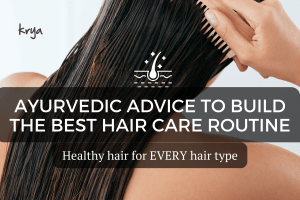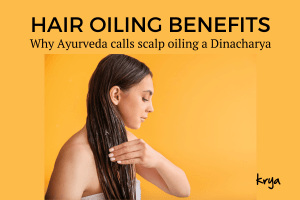This post was last updated on August 12, 2021 by Preethi Sukumaran
We spoke about how human hair was closest in texture and composition to silk and animal proteins like wool, last week in our Hair 101 series. We also spoke a few weeks earlier about hair porosity and why hair becomes porous with excessive shampooing and chemical treatments, and why that is not a good thing.
Hair elasticity and hair porosity are 2 sides of the hair health coin.
Our hair is supposed to be slightly elastic (note the use of the word, slightly), It is supposed to stretch slightly when we comb it or when it is wet. But it is supposed to bounce back to its normal length and texture when we release it from its pulling force.

So if you are combing hair that is curly or wavy and you have a few knots, healthy hair is supposed to stretch as you try and tease that tangle out of your hair, without breaking. Once you have detangled your hair, healthy hair is supposed to go back to its original wavy or curly appearance without losing the tightness of the curl.

Similarly, when hair is wet, it tends to expand and stretch slightly. As long as the cuticular structure is intact, this expansion of stretching is very limited. The cuticular structure limits the water from entering your hair and causing it to swell and break. As long as your cuticles are intact, wetting your hair will only cause a slight, temporary expansion that will go back to normal once hair is dry.
How does having healthy elasticity protect your hair?
Having the correct amount of elasticity allows your hair strands to stay intact without breakage whenever your hair is manipulated mechanically (for example combed, brushed, de-tangled, twisted into a braid, slept on, etc). Elasticity also helps keep the hair structure intact. So if you have curly or wavy hair, your hair’s elasticity allows your hair to comb back to its normal appearance and shape even after washing it, or temporarily straightening it.

What reduces hair elasticity? Weathering due to high shampooing and chemical use
We spoke about how hair porosity increases (excessive shampooing, use of hard water, blow drying, colours and synthetic treatments). The more you subject your hair to these treatments, the faster your hair ages or “weathers”. Just like aging skin loses its elasticity and begins to sag, weathered hair loses its elasticity and becomes porous and dry.
So here are Krya’s 3 recommendations to retain your hair’s elasticity:
- Pre-treat and Protect your hair from swelling and dehydration and friction that occurs when it is wet
The layer just below the hair’s cuticular structure is called the endocuticle. The endocuticle can absorb a lot of water and swell very fast. Usually in healthy hair, the endocuticle is guarded by 4 – 11 layers of interlocking cuticles. This layer, when intact, reduces the amount of water that reaches the endocuticle so the hair’s welling is controlled. But f your hair is already weathered and has lost parts of its cuticular structure, the endocuticle swells very fast.
Pre-treating hair with a layer of oil helps repel water to some extent and protects the endocuticle from absorbing water too fast. A pre-treatment works best if your hair is oiled atleast an hour before your wash. We also recommend spreading the oil well through the hair by detangling your hair well and combing it so the oil spreads evenly and covers your hair strands well.

- Choose a very mild shampoo, that is preferably naturally mildly acidic
Most shampoos are very harsh on hair, and quickly cause cuticular damage. Surprisingly, even no-poo shampoos that depend upon baking soda and vinegar are also harsh on hair, causing rapid swelling of the endocuticle. Natural detergent herbs like Shikakai, Soapberry are better for hair when mixed with the right amount of naturally acidic ad conditioning herbs. They are not as efficient as removing oil as alkaline soaps or shampoos are, and help retain the scalp’s natural pH better.

- Prevent hair dehydration at other times
Hair that is even partially porous is quick to lose its natural moisture because of gaps in the cuticular structure. So, if your hair is already weathered due to excessive shampooing, heat based treatments or styling, we advise coating it frequently with a thin layer of oils, especially before you step out. The air-conditioner, strong wind and heat can quickly de-hydrate porous hair, so a thin layer of herbal oil helps seal the hair from drying elements.
This oil is best applied in small quantities on the scalp and at portions of the hair which are very dry like the ends of your hair.
Apart from protective oiling, we also advise covering your hair protecting it from drying wind, heat and the cold.
Krya product recommendations for hair with poor elasticity:
The Krya Damage repair hair oil is an excellent hair oil to repair high porosity and improve elasticity if your hair is weathered due to chemical damage. This oil is very suitable for leave in application as a protective layer as well.





